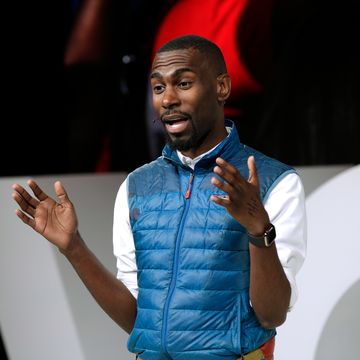Two years ago, suicide became the leading cause of death by injury in America, surpassing car accidents for the first time. And the major reason for that change was a cohort shift: Men and women between the ages of 35 and 64 are increasingly committing suicide. The latest addition to these statistics is Robin Williams.
Since nothing ever happens in America until it happens to a celebrity, perhaps this will be the moment when we notice that we're living in the middle of a suicide crisis, and a suicide crisis that particularly affects middle-aged men.
Four years ago,there were 38,364 suicides compared with 33,687 deathsby car accident. In a sense, those numbers would not be so worrying if their acceleration were not so marked.
The group that has shown the highest increase in suicide rates is middle-aged men and women, for whom the number of suicides has risen by a horrifying 28.4 percent in a mere decade. The sharpest increase has been among men in their fifties, for whom the number has risen nearly 50 percent since 1999. Now nearly 30 per 100,000 American men in their fifties kill themselves. Suicides are increasing across the board, from college students to the elderly, but the increases for the middle-aged are shocking.
The reasons for this rise are unknown. The increased availability of prescription drugs may play some role. Suicide by poisoning was an increasingly common method. There have never been more guns in America and gun ownership also correlates to an increase in suicide. There has also been the brutality of the recession and the new reality of people in middle age taking care of elderly parents while they're also taking care of young children.
Obviously, economic pressures are the most compelling reason. Suicides increase dramatically during recessions. They increased during the Great Depression and during the Asian financial crisis. Across Europe, suicides increased by 3.3 percent after the crash. There have been significant increases in suicides for men across the world, at over 10 percent for the European Union countries. But not a 50 percent jump as for men between 50 and 59 in America.
But the more substantial (and more complicated and disturbing) answer may be cultural. Suicide is not connected to religious values or to traditional family structures. But suicide is one of the most media-sensitive of phenomena.
"The Werther Effect," as it is known in social science, explains how and why people emulate suicides when they read descriptions of them. The phrase derives from the wave of suicides that followed the publication of Goethe's novel The Sorrows of Young Werther in 1774, but the phenomenon remains in effect today. When Austria controlled the publication of the details of subway suicides in newspapers and on television in 1987, for example, the number of suicides and suicide attempts decreased 80 percent in six months.
More prevalent suicide in media, the studies say, does lead to more suicide in real life.
The suicides of cultural figures—and God it feels like there have been far too many this year, and the best people, too—are only a symptom. Individuals decide to take their lives for many complex reasons. But more so now than ever, those decisions emerge out of our culture. We live, as has been well-established, in an increasingly lonely, increasingly depressed world.
The number of children officially qualifying as "disabled by mental disorders" has increased 35 times between 1987 and 2007. It should come as no surprise that the most common way a life ends violently today is by choice. And that fact has very suddenly emerged only in the past 10 years. Depression is increasing markedly, while the stigma against depression remains in effect. One of them has to give, because in combination they kill tens of thousands.
What does it mean? What do we do about it? Every now and then, I read a backlash-to-the-backlash-style essay which basically runs like this: The idea that we are living in extraordinary times is wrong. There has always been technological change. There have always been recessions. ...And so on. But for the generational cohort to which Robin Williams belonged, in which suicide has been growing by 28 percent, the growth of suicide is not historically or in any other way the norm. That is the trend—the real trend, the indisputable trend—that we need to figure out most urgently.














